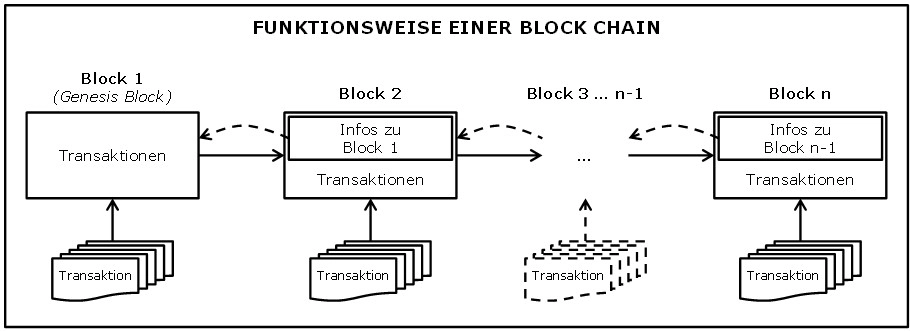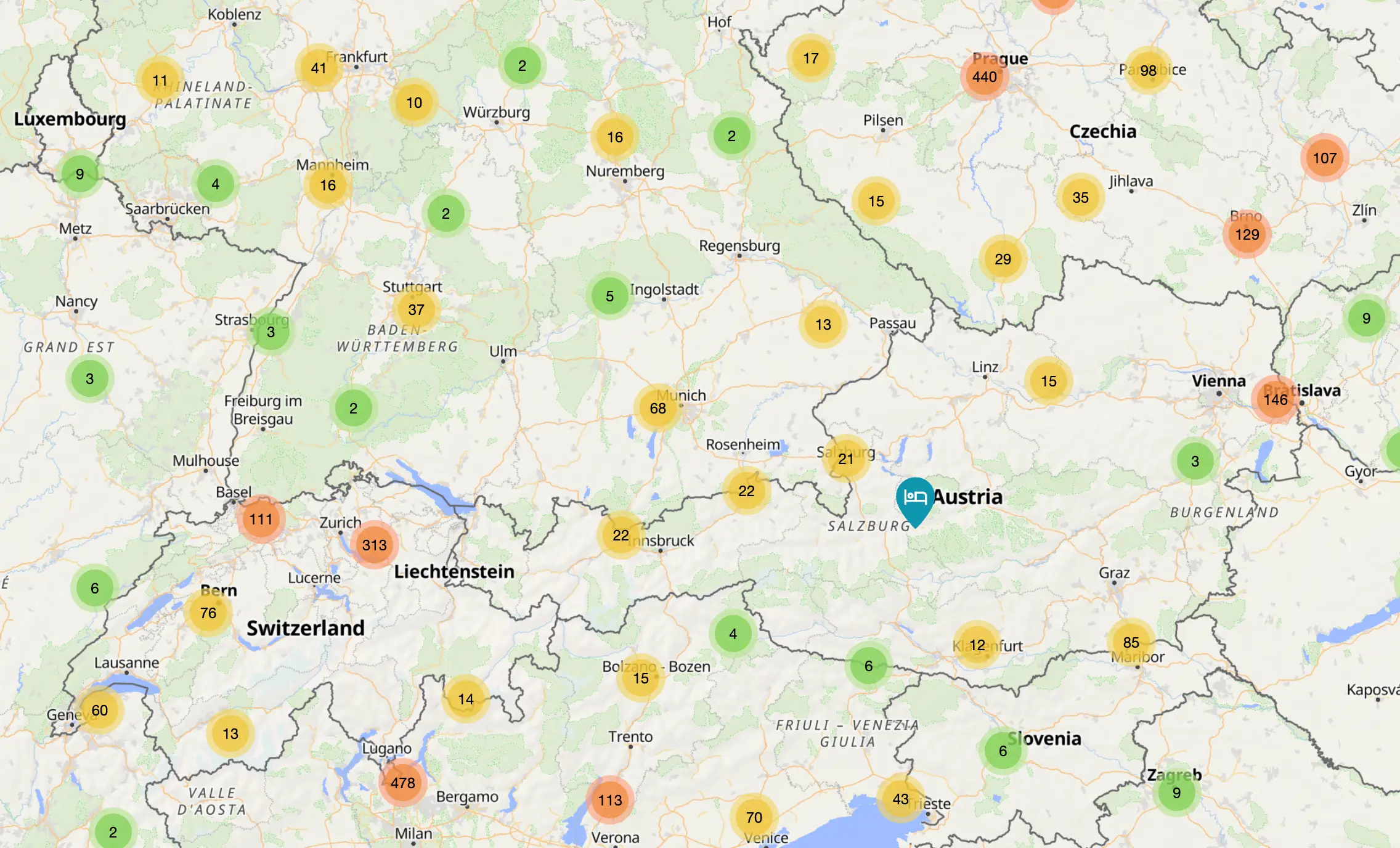1. What is Bitcoin?
Short definition: Bitcoin is a decentralized digital currency (cryptocurrency) developed by Satoshi Nakamoto in 2009. It enables transactions without a bank or intermediary and is based on the blockchain, a public, immutable digital cash book. With a maximum of 21 million coins, Bitcoin is considered a scarce, digital storage solution.
Bitcoin is a decentralized digital currency created in 2009 by an unknown person or group under the pseudonym Satoshi Nakamoto. Unlike classic currencies, which are issued and controlled by governments or central banks, Bitcoin is based on a global infrastructure, which is organized in a completely decentralized manner.
At its bitcoin is a cryptocurrency, that uses advanced cryptographic methods for transactions. Every Bitcoin transaction is processed in the blockchain, a public digital cash book and, stored chronologically. As a result, all processes for the network are comprehensible, transparent and virtually unchangeable.
Simply put, bitcoin enables to send and receive values over the Internet without a bank or a middleman. The underlying technology that blockchain, ensures that all transactions are verified in a decentralized manner. This is what Bitcoin does both safe as well resistant to manipulation.
Originally bitcoin was developed as an alternative to the traditional financial system. Through the limited total amount of 21 million coins the digital currency is fundamentally different from fiat money. The amount of fiat money can be expanded at will. This scarcity means that many users use Bitcoin as a safe store of value or ”digital gold“.
In spite of volatility of Bitcoin Investors often see cryptocurrency as protection against inflation. One Bitcoin wallet enables everyone to maintain control of their own digital assets, regardless of banks or payment service providers. Bitcoin thus combines the advantages of digital currency with the principles of decentralized currency.
2. Why was Bitcoin invented?
Bitcoin was born out of the need for a decentralized, independent payment system, which is not controlled by banks, governments, or traditional financial institutions. The financial crisis of 2008 clearly showed the weaknesses of the traditional banking system: Banks were unable to prevent bankruptcies, governments had to intervene, and many people lost trust in fiat currencies.
The whitepaper from Satoshi Nakamoto, published in October 2008, laid the basis for Bitcoin as a digital currency, which functions without central authority. The aim was transactions directly between users to make them tamper-proof and transparent.
Other factors that inspired the development of Bitcoin included:
- The search for a inflation-proof store of value.
- The increasing importance of digital money in the Internet age.
- Restrictions on traditional payment methods, or Gold possession bans in certain countries.
Bitcoin was not only invented as means of payment, but also as solution to traditional financial problems. With limited total amount of 21 million coins it guarantees scarcity while decentralization and blockchain technology create trust without central authority.
3. How does Bitcoin work?
Bitcoin is a digital currency, which works on the blockchain technology. This technology ensures that transactions are transparent, secure and decentralized and take place without the need for a bank or central authority. To use Bitcoin, you need to understand how blockchain, Bitcoin mining and Bitcoin addresses and wallets work together.
3.1. Blockchain simply explained
The blockchain can be understood as a public, immutable ledger for Bitcoin. Think of it as a digital accounting book that is maintained simultaneously by many participants. Each Bitcoin transaction is grouped into a block; this block is assigned a unique hash and then added chronologically to the chain of previous blocks. Once a block has been confirmed, its contents can no longer be changed — this creates trust without the need for a central authority.
In addition to transaction data, each block also contains a reference (hash) to the preceding block. This linkage makes the blockchain highly secure: if a block were to be manipulated, the hash would no longer match, and the alteration would be immediately detected.

The decentralization of the network — with thousands of computers distributed worldwide — ensures that no single party controls the blockchain. As a result, Bitcoin functions as a truly decentralized currency. Blocks are validated by the network (through mining or validators), which protects the system against double spending.
For users, this means that transactions are transparent (anyone can verify them), pseudonymous (identified by addresses rather than real names), and permanently recorded. Overall, the blockchain combines security, transparency, and immutability within a single system.
3.2. How does Bitcoin Mining work?
Bitcoin mining is the process by which new bitcoins are created and transactions are confirmed on the blockchain. Miners operate specialized computers that solve complex cryptographic puzzles. This process, known as Proof of Work, ensures that the network remains secure and decentralized.
When new transactions occur, the data is bundled into a block. Miners then compete to find a valid hash for this block. The hash must meet specific requirements, which makes solving the problem computationally intensive. Once a miner finds a suitable hash, the block is proposed to the network and, after being verified, is permanently added to the blockchain.
As a reward, the successful miner receives the so-called block reward, consisting of newly created bitcoins as well as transaction fees. With each halving event, this reward is reduced by half, causing Bitcoin to become increasingly scarce. This built-in scarcity is a key reason why Bitcoin is often referred to as digital gold.
Mining also plays a crucial role in decentralization, as thousands of independent miners across the globe participate in securing the network. It prevents manipulation and double spending and ensures that Bitcoin transactions remain transparent and immutable. Without mining, Bitcoin could not function as a decentralized currency.
3.3. How do I use Bitcoin — Transactions and Wallet Types
To use Bitcoin, you need a Bitcoin wallet. It functions like a digital account that allows you to store, send, and receive bitcoin. Each wallet contains a key pair: a public key (similar to an account number) and a private key (comparable to a password). Only the person who owns the private key has full control over the bitcoins in the wallet.
There are different types of wallets:
- Hot wallets are connected to the internet, such as smartphone apps or desktop wallets. They are ideal for everyday use and for making quick Bitcoin transactions.
- Cold wallets operate offline, such as hardware wallets or paper wallets. They provide a particularly high level of security because they cannot be attacked online. For this reason, they are considered the best option for long-term storage of larger amounts of bitcoin.
A Bitcoin transaction works as follows: the sender signs the transaction with their private key and broadcasts it to the network. Miners and nodes verify the transaction and, once confirmed, add it to a new block in the blockchain. As a result, every transaction is recorded permanently, transparently, and cannot be altered.
For users, this means that Bitcoin can be transferred worldwide, at any time, without the involvement of a bank. Transactions are pseudonymous, fast, and based entirely on the decentralized structure of the blockchain. The wallet serves as a personal tool that gives users full control over their own cryptocurrency.
4. Why is Bitcoin important?
Bitcoin has evolved from an experimental cryptocurrency into a globally significant digital currency. Its most important characteristic is consistent decentralization, which allows value to be transferred worldwide without relying on banks, governments, or payment providers. In many regions, Bitcoin already provides financial freedom to people who lack access to stable currencies or functioning banking systems.
Blockchain technology ensures that Bitcoin transactions are transparent, secure, and immutable. This creates a system that cannot be manipulated by any single party. Especially in times of economic uncertainty, political instability, or high inflation, Bitcoin offers many users a reliable way to preserve long-term value.
Another reason for Bitcoin’s growing importance is its limited supply, capped at 21 million BTC. This artificial scarcity fundamentally distinguishes Bitcoin from fiat currencies, which can be continuously increased by central banks. Many people therefore view Bitcoin as a form of digital store of value, serving as a long-term supplement or alternative to gold.
Thanks to its decentralized structure, global accessibility, and growing acceptance by companies, governments, and financial institutions, Bitcoin is now much more than just a means of payment: it is an international, open, and censorship-resistant monetary system.
4.1. Bitcoin Decentralization

Decentralization is one of Bitcoin’s key features. Unlike traditional currencies, Bitcoin is not controlled by any bank, government, or institution. Instead, thousands of independent computers, called nodes, run the network worldwide. Each node stores a complete copy of the blockchain and verifies every Bitcoin transaction before it is confirmed.
This system eliminates any single point of failure: an attack on individual nodes or even entire countries cannot paralyze the network. Changes to the blockchain are only possible if the majority of nodes agree, making manipulation virtually impossible.
Decentralization also ensures that Bitcoin transactions are transparent and verifiable without requiring users to reveal private data or personal identities. Users maintain full control over their Bitcoin wallets and can decide when and where to send transactions.
This principle makes Bitcoin a truly decentralized currency, operating independently of political or economic decisions. Many experts view this as a major reason why Bitcoin is attractive as a long-term digital store of value.
4.2. Is Bitcoin safe?
Bitcoin is considered a highly secure digital currency, thanks in large part to the combination of blockchain technology, cryptography, and decentralization. Each Bitcoin transaction is stored in a block, which is encrypted and assigned a unique hash. Any attempt to alter a block would be immediately apparent, as every block builds upon the previous one.
Network security is maintained through mining: miners confirm transactions, solve cryptographic puzzles, and protect the blockchain from manipulation. Attacks such as double spending are virtually impossible as long as the majority of nodes function correctly.
Control over one’s own wallet also contributes to security. Anyone who safeguards their private key retains full control over their bitcoins. Users can choose between hot wallets for everyday transactions and cold wallets for secure long-term storage.
Despite the strong technological security, risks do exist primarily outside the blockchain itself, such as stolen private keys, phishing attacks, or insecure wallets. From a technological standpoint, however, Bitcoin remains one of the most secure systems for digital currencies.
4.3 Is Bitcoin a Store of Value?
Many experts consider Bitcoin to be digital gold and a reliable store of value because its total supply is capped at 21 million BTC. This artificial scarcity sets Bitcoin apart from fiat currencies, whose supply can be increased at will by central banks.
As a digital currency, Bitcoin also allows value to be transferred worldwide quickly, securely, and without intermediaries. Investors value its decentralization, as no bank or government controls ownership. This makes Bitcoin particularly appealing in countries with unstable currencies or high inflation.
However, Bitcoin is known for its high volatility. Prices can fluctuate significantly in the short term, although the cryptocurrency often demonstrates an upward trend over the long term. Those using Bitcoin as a store of value should therefore plan strategically and account for potential price swings.
Users also benefit from blockchain transparency: every transaction is permanently recorded, tamper-proof, and fully auditable, which strengthens trust in Bitcoin as a digital asset.
5. What are the Risks of Bitcoin? What are the Criticisms of Bitcoin?
5.1. Bitcoin Volatility
Bitcoin is known for its high volatility, meaning its price can fluctuate significantly over short periods. These price swings are driven by factors such as supply and demand, market sentiment, regulatory news, or large transactions by so-called whales (investors with substantial holdings).
For investors, this volatility presents both opportunities and risks. Short-term gains can be significant, but rapid losses are also possible. Over the long term, however, Bitcoin often demonstrates an upward trend, which makes it attractive as a store of value for many people.
Volatility also reflects the relative youth of the cryptocurrency market: these markets are less stable than traditional financial markets, and the value of Bitcoin transactions can vary greatly depending on price developments. Anyone planning to hold Bitcoin long-term should be aware of these fluctuations and plan strategically.
Over time, however, it has been observed that Bitcoin’s volatility tends to decrease, suggesting increasing market stability as the cryptocurrency matures.

5.2. Bitcoin Energy Consumption
A common criticism of Bitcoin is its high energy consumption. Bitcoin mining—the process of validating transactions and adding new blocks to the blockchain—requires enormous computational power. Miners operate powerful computers around the clock to solve complex cryptographic puzzles.
Estimates indicate that the Bitcoin network consumes more energy annually than some countries. This consumption is not only costly but also raises concerns about the environmental impact of digital currencies. Nevertheless, many mining companies are increasingly turning to renewable energy sources to reduce their environmental footprint.
Despite its high energy usage, advocates argue that the security, decentralization, and resistance to manipulation provided by Bitcoin justify this consumption. The blockchain ensures that every transaction is verified and that no central party can manipulate the system.
5.3. Is Bitcoin used by Criminals?
In the media, Bitcoin is often linked to illegal activities because it can be used pseudonymously. This means that addresses are not directly tied to names, providing a certain level of anonymity for some transactions.
In reality, illegal transactions make up only a small fraction of the total volume. Studies show that over 90% of all Bitcoin transactions serve legal purposes, such as using it as a digital currency, investment, or for international payments.
The blockchain itself even enhances transparency: every Bitcoin transaction is publicly recorded and permanently documented. Investigators can often trace cash flows, even if the identities behind addresses are not immediately apparent. In this way, Bitcoin offers less anonymity than cash while providing greater security and control for legitimate users.
6. Bitcoin Today and in the Future
6.1 Where is Bitcoin already accepted?
Bitcoin is increasingly being accepted worldwide as a means of payment. Many companies, online shops, and service providers now allow Bitcoin transactions to pay for goods and services. From large international corporations to small local businesses, it is clear that digital currency is seeing growing practical use.
Some countries even officially adopt Bitcoin or implement regulations to enable its legal use in commerce. In regions with unstable currencies or limited access to banking systems, Bitcoin provides financial freedom to people who would otherwise have no secure means of payment.
The growing acceptance demonstrates that Bitcoin is not only an investment asset or store of value, but is also increasingly used as a practical means of payment in everyday life. The combination of blockchain technology, decentralization, and global accessibility makes Bitcoin particularly flexible.

6.2 Is Bitcoin regulated?
Bitcoin is not a national currency and is generally not centrally regulated. However, the use of the digital currency is subject to certain laws and regulations in many countries, for example regarding anti-money laundering, tax obligations, or financial market supervision.
Regulation varies widely: some countries recognize Bitcoin as an official means of payment or allow legal trading, while others prohibit trading or ownership altogether. In many regions, Bitcoin is treated as an investment product, which requires banks and financial service providers to comply with specific security and transparency standards.
Regulatory measures primarily aim to protect users, combat illegal activities, and maintain the stability of the financial system. At the same time, Bitcoin remains decentralized and operates independently of these rules, as blockchain technology does not rely on a central authority.
6.3 Bitcoin vs. other Cryptocurrencies and CBDSs
Bitcoin is the first and most well-known cryptocurrency, but the market has grown significantly. There are numerous altcoins, such as Ethereum, Ripple, and Litecoin, which offer different technical features or use cases. While Bitcoin is primarily used as a decentralized currency and digital store of value, other cryptocurrencies focus on smart contracts, faster transactions, or decentralized applications.
Another point of comparison is CBDCs (Central Bank Digital Currencies). Unlike Bitcoin, CBDCs are issued and controlled centrally by states. They are typically designed to maintain monetary stability and integrate with the existing financial system, whereas Bitcoin remains independent and decentralized.
7. How can I start with Bitcoin?
Using Bitcoin has become easier than ever. If you want to get started, follow a few basic steps to work safely and effectively with the digital currency:
1. Choose a Wallet
First, you need a Bitcoin wallet to store your coins securely. There are several options:
- Hot wallets: Apps or online services, convenient for everyday transactions.
- Cold wallets: For example, hardware wallets, ideal for long-term storage and maximum security.
2. Buy Bitcoin
You can purchase Bitcoin on cryptocurrency exchanges or through brokers. Make sure to choose reputable providers and pay attention to fees and security measures.
Buy Bitcoin easily, quickly and securely with 21bitcoin - invest in the future today!
3. Conduct Transactions
Once you own Bitcoin, you can send and receive transactions. Each transfer is verified through the blockchain, ensuring that your coins are managed transparently and securely.
4. Continue Learning
Since the market is volatile, it’s important to stay informed about price developments, security, and regulatory changes. Our “Education” section offers numerous articles on cryptocurrencies, blockchain technology, and Bitcoin topics, helping you get started with confidence.
*Note: Past performance is not a reliable indicator of future results. *Marketing communication, FIOR Digital GmbH*


%202%20(1).jpg)

